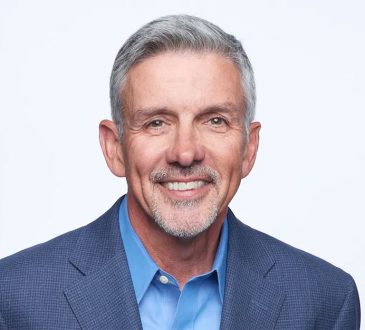References Not To Be Forgotten: Case study Of strategic Human Resources In China

References available on request is the footnote of most CVs written in English, yet all too often the ‘final hurdle’ of the hiring process is either forgotten altogether or given only cursory attention, yet a quality reference checking process is not merely a disaster prevention practice, it can unearth vitally important information required to manage and develop the new hire. In this article, I explore some of the less obvious reasons to properly check references with a specific focus on hiring in mainland China, as well as uncovering some of the reasons it’s so important for us, as employees, to remember that with the web 2.0 our behaviour can be referenced [almost] 24/7.
Firstly, looking at China, which places a much greater importance on interpersonal relationships (“Guanxi” in Mandarin) than many societies, there has been a belief that it is possible to get away with using a ‘friend’ [ex-colleague] as a reference for a new job who often may not have had the authority or seniority to act in this capacity. The use of casual friends as referees has been fuelled by the intense competition for good-quality employees (“talent”) in China which really hasn’t subsided much in the post 2008 era because the temptation for the hiring authority or representative to side-step the referencing process has been great. There is also a unspoken assumption that the references may not be that valid anyway because everyone uses their friends as referee. ‘It’s just how it is’.
This is total nonsense, and needs correcting:
If the requester of references produces said references from friends, allies, or others not properly qualified to give a reference then it is the fault of the reference checker or reference requester, not the guanxi oriented society or white-hot China / Asia jobs market. This is important to understand. If we, as employers realise we must take responsibility for ensuring quality reference checks then we come a step closer to actually doing that; and consequently take less risk, and improving our overall hiring process.
So how do you currently check references? I would imagine, if you do it at all, you call (or worse simply email) the referee asking them to fill in a form or answer a few basic questions. The answers of course will all be very positive, as most shy away from asking probing questions in the first place, the call is concluded or the form filled in, and hey presto, the reference check box of the hiring process is completed.
Let me illustrate a few simple things you can do to make your reference checking process much, much better:
- Get the people right. Which people I hear you ask? Firstly the checkers of references must be qualified; and qualified means: 1) they have a depth of understanding of the employment market which is superior to that of a generalist, 2) they know how to check references, 3) they’ve done it before preferably more than once, and 4) they’re good at it.
- Get the people right. Which people I hear you ask again? The referees: The people who’s information you are relying on to make a hiring decision that will either make or cost your firm a lot of money. Joe Bloggs’ mate in their last firm is not a reference. Anyone with any amount of emotional attachment to that of the person being referenced is not a reference. The referee must be able to talk openly, objectively, honestly and without fear of reprisals about the strengths and weaknesses of a candidate. This usually means our subject’s manager’s manager. However we must not stop there…………
- ……..We must realise that our market research (for that is exactly what it is) in to this candidate must be qualitative but also quantitative. The standard two references is not enough. It must be at least five to even start to reasonably assume 1) a sufficiently randomized sample and 2) greater objectivity and 3) requiring a higher number of references means digging back in to someone’s career and therefore speaking to more and more people who have less and less emotional attachment to the candidate.
Why is someone’s work of 10 years ago relevant you might well ask? For this simple reason: when we are checking references we are checking what it is someone has done but (even more importantly) we are checking how a person has done it: how they have behaved. Many psychologists (and I happen to agree with them) tell us that people tend to repeat and repeat and repeat the same patterns of behaviour for their entire lives: ‘past behaviour is the best indicator of future performance’ is an oft repeated (and oft ignored) mantra of the seasoned HR expert.
- Quality: We must then pay great attention to the qualitative aspect of reference checking process. RMG’s consultants have an average of 7 years recruitment/HR experience, however the reference checking process is not something that’s kicked down to the juniors. Even in my 16th year in the search/recruitment business I still regularly participate in the reference checking process be it through mentoring younger consultants or for senior-level assignments I’m conducting myself. So, let me highlight for a second some of the less obvious aspects of a high-quality referencing process:
- Once we have sourced enough referees (and remember if we want to speak to 5, not all will be available so we need 8 names to start with), my recommended approach is to meet with the referees in person rather than simply replying on telephoned references.
- When we meet people in person, we have the advantage of guaranteeing their complete attention to the subject at hand. If someone I’m talking to picks up their phone, I stop talking. If their gaze wanders, I stop talking. If they’re distracted you will know about it.
- When you talk to someone in person it’s simply better quality information. Again, our trusty psychologists report that 93%, yes NINETY THREE PERCENT of communication is non-verbal: i.e. body language, facial expressions, posture, etc. All stuff that’s hard to understand on a phone call. Face to face engagement means that you have a far greater chance of understanding when a ‘yes’ is in truth a ‘no’, or a ‘maybe’
- There’s not much thing as bad feedback, it’s just feedback. Of course there is feedback that we may subjectively consider to be bad, but if we re-label all information from the referee as just feedback (and also convey so to the referee) then we remove the emotion and get another step towards the truth. For example if a female employee is not punctual and often late to work, this is not necessarily ‘bad’. Probing for further feedback will help us to understand that she’s a new mother, and almost always works late in the evening and never has lunch! The newly qualified professional obsession with questioning regulations or rules might be seen as aggressive or inappropriate until we understand they they are a newly qualified lawyer, and they’ve been trained to question as such.
- A thorough report in to someone’s real strengths and weaknesses will give the new employer a great head-start in the management, development and generally ‘getting the most from’ the prospective employee. Information is power.
So, all this thoroughness might seem like it’ll take a lot of time, and it often does; but it takes a lot more time (and money) repeating the hiring process again after an avoidable failure. One of RMG’s longest standing clients has a hiring process that is frustratingly long, however they have a great corporate culture and a very low rate of attrition (staff turnover) and it’s perhaps their referencing process that facilitates this. We know this because staff we’ve placed with them are still there are 7/8 years.
I’d like to conclude with a slight twist: I’ve largely been addressing the client (employer) in this article thus far, however as employees in China, we should keep in mind that although there are many employers and recruiters who have a lousy referencing process, there are also many (an increasing number) that have a great process; and, how you behave, and what you say and do is more and more likely to be absorbed by the atmosphere that cocoons you (of course dramatically accelerated by the web /’social’ media). In my company, all of our consultants are ‘ultra-specialists’ and recruit professionals in one, extremely niche specialist discipline/sector: if an RMG consultant recruits Chinese-speaking Qualified bankers in the 8-10 tear PQE bracket (for example), then I can assure you that is what they will do, and they pride them-selves in knowing everyone in the market, and we do know (for example) who sleeps in the office and who doesn’t, who always at the dentist on Friday morning after a big deal and who’s not etc.
The Chinese professional employment landscape is on the one hand vast, and on the other very small: I’m always amused by the question of: ‘how do you eat an elephant?’ (a) – ‘one slice at a time’ and when professionals are dissected and magnified in small niche groups, with professional recruiters adopting an ultra-specialist processes with (for one thing) detailed face to face references there really is no-where to hide (even if you do really have toothache!!).
Written by Robert Parkinson, CEO and Founder of international executive recruitment group RMG Selection; editing by Amarendra Bhushan, Janina Energin, Hendrik L Clarke, and Amy Canter.
Add CEOWORLD magazine to your Google News feed.
Follow CEOWORLD magazine headlines on: Google News, LinkedIn, Twitter, and Facebook.
This report/news/ranking/statistics has been prepared only for general guidance on matters of interest and does not constitute professional advice. You should not act upon the information contained in this publication without obtaining specific professional advice. No representation or warranty (express or implied) is given as to the accuracy or completeness of the information contained in this publication, and, to the extent permitted by law, CEOWORLD magazine does not accept or assume any liability, responsibility or duty of care for any consequences of you or anyone else acting, or refraining to act, in reliance on the information contained in this publication or for any decision based on it.
Copyright 2024 The CEOWORLD magazine. All rights reserved. This material (and any extract from it) must not be copied, redistributed or placed on any website, without CEOWORLD magazine' prior written consent. For media queries, please contact: info@ceoworld.biz
SUBSCRIBE NEWSLETTER









